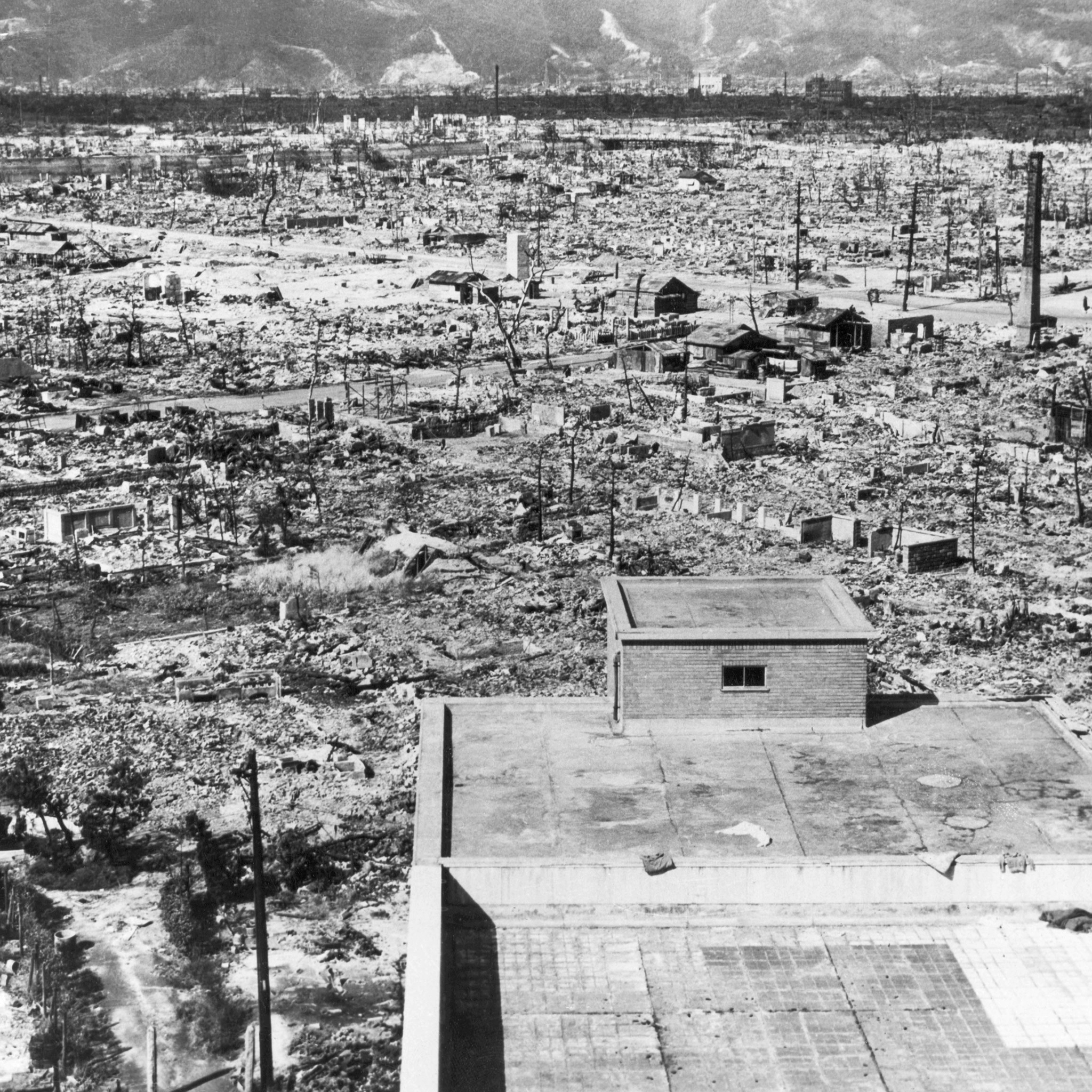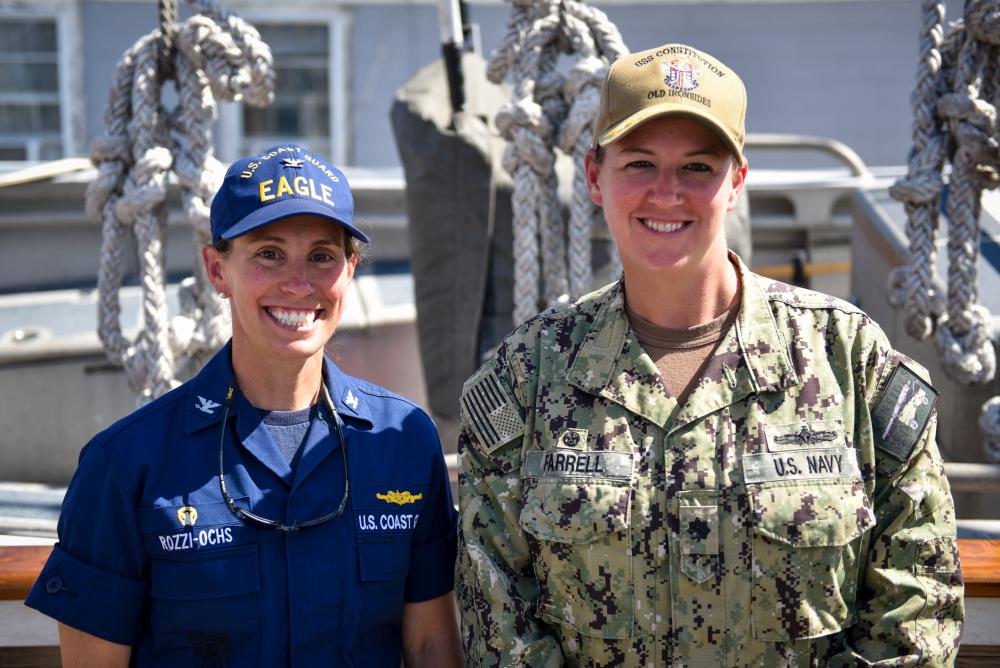|
Charles Critchfield
Charles Louis Critchfield (June 7, 1910 – February 12, 1994) was an American mathematical physicist. A graduate of George Washington University, where he earned his PhD in Physics under the direction of Edward Teller in 1939, he conducted research in ballistics at the Institute for Advanced Study in Princeton and the Ballistic Research Laboratory at the Aberdeen Proving Ground, and received three patents for improved sabot designs. In 1943, Teller and Robert Oppenheimer persuaded Critchfield to come to the Manhattan Project's Los Alamos National Laboratory, where he joined the Ordnance Division under Captain William Parsons on the gun-type fission weapons, Little Boy and Thin Man. After it was discovered that the Thin Man design would not work, he was transferred to Robert Bacher's Gadget Division as the leader of the Initiator group, which was responsible for the design and testing of the "Urchin" neutron initiator that provided the burst of neutrons that k ... [...More Info...] [...Related Items...] OR: [Wikipedia] [Google] [Baidu] |
Los Alamos National Laboratory
Los Alamos National Laboratory (often shortened as Los Alamos and LANL) is one of the sixteen research and development laboratories of the United States Department of Energy (DOE), located a short distance northwest of Santa Fe, New Mexico, in the American southwest. Best known for its central role in helping develop the first atomic bomb, LANL is one of the world's largest and most advanced scientific institutions. Los Alamos was established in 1943 as Project Y, a top-secret site for designing nuclear weapons under the Manhattan Project during World War II.The site was variously called Los Alamos Laboratory and Los Alamos Scientific Laboratory. Chosen for its remote yet relatively accessible location, it served as the main hub for conducting and coordinating nuclear research, bringing together some of the world's most famous scientists, among them numerous Nobel Prize winners. The town of Los Alamos, directly north of the lab, grew extensively through this period. A ... [...More Info...] [...Related Items...] OR: [Wikipedia] [Google] [Baidu] |
George Gamow
George Gamow (March 4, 1904 – August 19, 1968), born Georgiy Antonovich Gamov ( uk, Георгій Антонович Гамов, russian: Георгий Антонович Гамов), was a Russian-born Soviet and American polymath, theoretical physicist and cosmologist. He was an early advocate and developer of Lemaître's Big Bang theory. He discovered a theoretical explanation of alpha decay by quantum tunneling, invented the liquid drop model and the first mathematical model of the atomic nucleus, and worked on radioactive decay, star formation, stellar nucleosynthesis and Big Bang nucleosynthesis (which he collectively called nucleocosmogenesis), and molecular genetics. In his middle and late career, Gamow directed much of his attention to teaching and wrote popular books on science, including '' One Two Three... Infinity'' and the '' Mr Tompkins'' series of books (1939–1967). Some of his books are still in print more than a half-century after their original pub ... [...More Info...] [...Related Items...] OR: [Wikipedia] [Google] [Baidu] |
Little Boy
"Little Boy" was the type of atomic bomb dropped on the Japanese city of Hiroshima on 6 August 1945 during World War II, making it the first nuclear weapon used in warfare. The bomb was dropped by the Boeing B-29 Superfortress '' Enola Gay'' piloted by Colonel Paul W. Tibbets, Jr., commander of the 509th Composite Group of the United States Army Air Forces and Captain Robert A. Lewis. It exploded with an energy of approximately and caused widespread death and destruction throughout the city. The Hiroshima bombing was the second man-made nuclear explosion in history, after the Trinity nuclear test. Little Boy was developed by Lieutenant Commander Francis Birch's group at the Manhattan Project's Los Alamos Laboratory during World War II, a reworking of their unsuccessful Thin Man nuclear bomb. Like Thin Man, it was a gun-type fission weapon, but it derived its explosive power from the nuclear fission of uranium-235, whereas Thin Man was based on fission of plutoniu ... [...More Info...] [...Related Items...] OR: [Wikipedia] [Google] [Baidu] |
Gun-type Fission Weapon
Gun-type fission weapons are fission-based nuclear weapons whose design assembles their fissile material into a supercritical mass by the use of the "gun" method: shooting one piece of sub-critical material into another. Although this is sometimes pictured as two sub-critical hemispheres driven together to make a supercritical sphere, typically a hollow projectile is shot onto a spike which fills the hole in its center. Its name is a reference to the fact that it is shooting the material through an artillery barrel as if it were a projectile. Since it is a relatively slow method of assembly, plutonium cannot be used unless it is purely the 239 isotope. Production of impurity-free plutonium is very difficult and is impractical. The required amount of uranium is relatively large, and thus the overall efficiency is relatively low. The main reason for this is the uranium metal does not undergo compression (and resulting density increase) as does the implosion design. Instead, gun ... [...More Info...] [...Related Items...] OR: [Wikipedia] [Google] [Baidu] |
William Sterling Parsons
Rear Admiral William Sterling "Deak" Parsons (26 November 1901 – 5 December 1953) was an American naval officer who worked as an ordnance expert on the Manhattan Project during World War II. He is best known for being the weaponeer on the ''Enola Gay'', the aircraft which dropped the Little Boy atomic bomb on Hiroshima, Japan in 1945. To avoid the possibility of a nuclear explosion if the aircraft crashed and burned on takeoff, he decided to arm the bomb in flight. While the aircraft was ''en route'' to Hiroshima, Parsons climbed into the cramped and dark bomb bay, and inserted the powder charge and detonator. He was awarded the Silver Star for his part in the mission. A 1922 graduate of the United States Naval Academy, Parsons served on a variety of warships beginning with the battleship . He was trained in ordnance and studied ballistics under L.T.E. Thompson at the Naval Proving Ground in Dahlgren, Virginia. In July 1933, Parsons became liaison officer between the Bureau ... [...More Info...] [...Related Items...] OR: [Wikipedia] [Google] [Baidu] |
Captain (United States O-6)
In the United States Navy, United States Coast Guard, United States Public Health Service Commissioned Corps (USPHS), and National Oceanic and Atmospheric Administration Commissioned Officer Corps (NOAA Corps), captain is the senior-most commissioned officer rank below that of flag officer (i.e., admirals). The equivalent rank is colonel in the United States Army, Air Force, Space Force, and Marine Corps. Reflecting its nautical heritage, the term ''captain'' is used as a military title by more junior officers who command a commissioned vessel of the Navy, Coast Guard, or National Oceanic and Atmospheric Administration (NOAA) ship of patrol boat size or greater. Officers below O-6 who command aviation squadrons (typically O-5 commanders) usually use the less formal title "skipper". Insignia File:US-O6 insignia.svg, USN, USCG, USPHSCC, and NOAACOC collar, cover (hat), or shoulder rank insignia (on select uniforms) File:US Navy O6 insignia.svg, The eagle, shoulder boards ... [...More Info...] [...Related Items...] OR: [Wikipedia] [Google] [Baidu] |
Robert Oppenheimer
J. Robert Oppenheimer (; April 22, 1904 – February 18, 1967) was an American theoretical physicist. A professor of physics at the University of California, Berkeley, Oppenheimer was the wartime head of the Los Alamos Laboratory and is often credited as the "father of the atomic bomb" for his role in the Manhattan Project—the World War II undertaking that developed the first nuclear weapons. Oppenheimer was among those who observed the Trinity test in New Mexico, where the first atomic bomb was successfully detonated on July 16, 1945. He later remarked that the explosion brought to mind words from the '' Bhagavad Gita'': "Now I am become Death, the destroyer of worlds." In August 1945, the weapons were used in the atomic bombings of Hiroshima and Nagasaki. After the war ended, Oppenheimer became chairman of the influential General Advisory Committee of the newly created United States Atomic Energy Commission. He used that position to lobby for international control of nuc ... [...More Info...] [...Related Items...] OR: [Wikipedia] [Google] [Baidu] |
Sabot (firearms)
A sabot (, ) is a supportive device used in firearm/artillery ammunitions to fit/patch around a projectile, such as a bullet/slug or a flechette-like projectile (such as a kinetic energy penetrator), and keep it aligned in the center of the barrel when fired. It allows a narrower projectile with high sectional density to be fired through a barrel of much larger bore diameter with maximal accelerative transfer of kinetic energy. After leaving the muzzle, the sabot typically separates from the projectile in flight, diverting only a very small portion of the overall kinetic energy. The sabot component in projectile design is the relatively thin, tough and deformable seal known as a driving band or obturation ring needed to trap propellant gases behind a projectile, and also keep the projectile centered in the barrel, when the outer shell of the projectile is only slightly smaller in diameter than the caliber of the barrel. Driving bands and obturators are used to seal these full-bo ... [...More Info...] [...Related Items...] OR: [Wikipedia] [Google] [Baidu] |
Aberdeen Proving Ground
Aberdeen Proving Ground (APG) (sometimes erroneously called Aberdeen Proving ''Grounds'') is a U.S. Army facility located adjacent to Aberdeen, Harford County, Maryland, United States. More than 7,500 civilians and 5,000 military personnel work at APG.There are 11 major commands among the tenant units, including: * United States Army Communications-Electronics Command (CECOM) * United States Army Combat Capabilities Development Command (CCDC) * United States Army Test and Evaluation Command (ATEC) * Edgewood Arsenal * Adelphi Laboratory Center **The Army Reserve Information Operations Command **Unified Cross Domain Services Management Office **HQ, U.S. Army Contracting Command (Army Contracting Command –APG, Adelphi Contracting Division) **U.S Army 93rd Signal Network - Network Enterprise Center **Logistics Readiness Center **U.S. Army Cyber Operation Group – 335th Signal Command **Blossom Point Research Facility History APG is the U.S. Army's oldest active proving ground ... [...More Info...] [...Related Items...] OR: [Wikipedia] [Google] [Baidu] |
Ballistic Research Laboratory
The Ballistic Research Laboratory (BRL) was a leading U.S. Army research establishment situated at Aberdeen Proving Ground, Maryland that specialized in ballistics (interior, exterior, and terminal) as well as vulnerability and lethality analysis. BRL served as a major Army center for research and development in technologies related to weapon phenomena, armor, electronic devices, and high-speed computing. In 1992, BRL's mission, personnel, and facilities were incorporated into the newly created Army Research Laboratory (ARL), and BRL was disestablished. BRL is perhaps best known for commissioning the creation of ENIAC, the first electronic general-purpose digital computer. History Formation The history of the Ballistic Research Laboratory dates back to World War I with the Office of the Chief of Ordnance (OCO) within the U.S. Army. During the first year of U.S. involvement in the war, the OCO was responsible for supervising ballistic firings at Sandy Hook Proving Ground in ... [...More Info...] [...Related Items...] OR: [Wikipedia] [Google] [Baidu] |
Princeton University
Princeton University is a private research university in Princeton, New Jersey. Founded in 1746 in Elizabeth as the College of New Jersey, Princeton is the fourth-oldest institution of higher education in the United States and one of the nine colonial colleges chartered before the American Revolution. It is one of the highest-ranked universities in the world. The institution moved to Newark in 1747, and then to the current site nine years later. It officially became a university in 1896 and was subsequently renamed Princeton University. It is a member of the Ivy League. The university is governed by the Trustees of Princeton University and has an endowment of $37.7 billion, the largest endowment per student in the United States. Princeton provides undergraduate and graduate instruction in the humanities, social sciences, natural sciences, and engineering to approximately 8,500 students on its main campus. It offers postgraduate degrees through the Princeton Schoo ... [...More Info...] [...Related Items...] OR: [Wikipedia] [Google] [Baidu] |
Ballistics
Ballistics is the field of mechanics concerned with the launching, flight behaviour and impact effects of projectiles, especially ranged weapon munitions such as bullets, unguided bombs, rockets or the like; the science or art of designing and accelerating projectiles so as to achieve a desired performance. A ballistic body is a free-moving body with momentum which can be subject to forces such as the forces exerted by pressurized gases from a gun barrel or a propelling nozzle, normal force by rifling, and gravity and air drag during flight. A ballistic missile is a missile that is guided only during the relatively brief initial phase of powered flight and the trajectory is subsequently governed by the laws of classical mechanics; in contrast to (for example) a cruise missile which is aerodynamically guided in powered flight like a fixed-wing aircraft. History and prehistory The earliest known ballistic projectiles were stones and spears, and the throwing stic ... [...More Info...] [...Related Items...] OR: [Wikipedia] [Google] [Baidu] |









